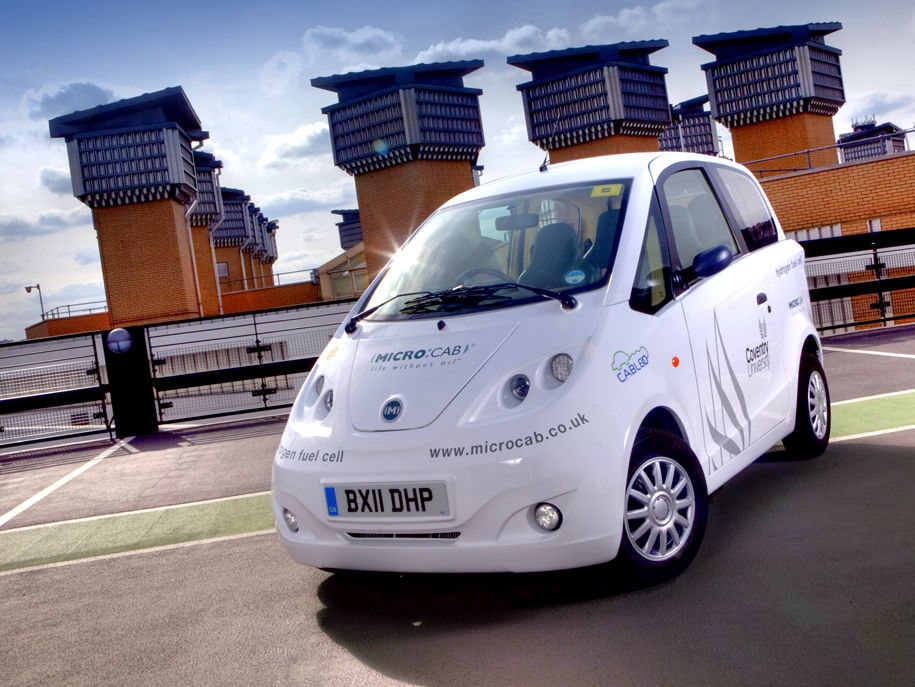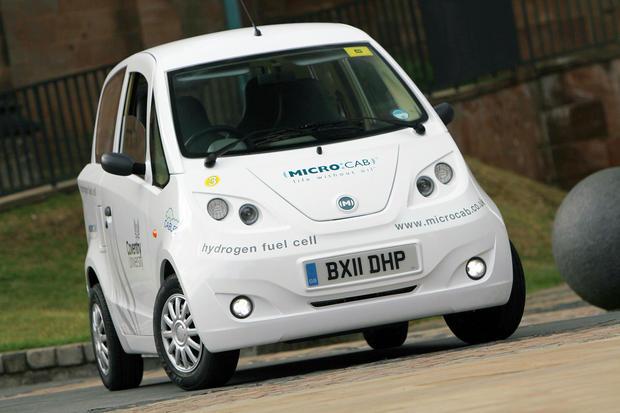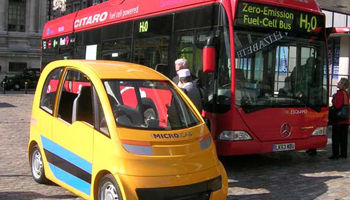

Offshore whaling began in Nantucket in 1673; by 1766 there were 118 whaling vessels sailing out of Nantucket Island, but in 1869 the last such ship left never to return. Although the whaling industry persists to this day, petroleum has long since replaced whale oil as an illuminant.
At one time, many people believed that oil, like coal, would last forever. Now, Mankind is faced with stark choices; fossil fuels too are running out. As President Carter pointed out in his famous speech on energy way back in 1977, the 1950s saw as much oil used as in all of human history, and the 1960s saw the same again. For a fascinating but frightening introduction to the impossibility of indefinite exponential growth and the mathematics of our impending doom, check out Professor Bartlett's famous lecture here, or watch him deliver it here.
Fortunately, there is a glimmer of hope on the horizon; there are both men of science and men of vision who are not simply developing the technology of a world without oil but are actually relishing it, and they have come together in Coventry, a city best known for being bombed during the Second World War, the home of a second rate soccer team and for a naked lady riding a white horse.
A car that runs on hydrogen was recently launched in Coventry; manufactured by Microcab, the H2EV was exhibited to the public days after the UK’s first public hydrogen refuelling station was opened at Swindon. This is not simply the future of green motoring but of motoring, and hopefully of everything else.

A photograph of a hydrogen car, donated by Microcab/Coventry University.
A fleet of the zero emission machines is to be supplied to the West Midlands’ CABLED trial. The acronym stands for Coventry And Birmingham Low Emission Demonstrator, and yes, we did say zero emission. So how does it work?
John Jostins is Professor of Sustainable Transport Design at Coventry University – hopefully they can find a more suitable acronym for his post than STD!
Professor Jostins answered a few questions by courtesy of PR man Alex Roache.
AB: The first question I have is as technical as I will get. I didn’t take chemistry at school but I did study it for awhile. From what I hear, the hydrogen car burns the gas and produces water, which is all very environmentally friendly, but the point is that if you break water down into hydrogen and oxygen by electrolysis, or even plasmafication, you use at least as much energy as burning it. How is the hydrogen produced in the first place, and what are the economics of this?
PJ: The hydrogen gas is not burnt. In the fuel cell it is made to join chemically with oxygen to make water and electricity as the two outputs. This electricity then powers the car. Hydrogen can come from natural gas (‘brown’ hydrogen), from electrolysis of water or from municipal waste. Experiments are going on with production from solar power and wind power – so called ‘green’ hydrogen.
AB: One of my favourite gems of information is that in February 1927, a half hour trans-Atlantic phone call between London and New York cost around £150, a staggering sum in those days. Nowadays, you can use Skype and other things in the local Internet caff for a pound or two an hour, which when you factor in inflation, makes it dirt cheap at 1927 prices. Now, apply that to hydrogen cars; how long will it be before the £9 million prototype can be used for shopping, the school run, or even for the small businessman?
PJ: Major manufacturers are saying that they will have fuel cell vehicles ready by 2015, and in Germany there is a plan to roll out large numbers of hydrogen fuel stations in readiness.
AB: There has recently been considerable excitement with the development of electric cars. What advantage does each have over the other, and do you foresee a coming rivalry between the two – as with say Apple and Microsoft?
PJ: The fuel cell car can be filled up with hydrogen in a few minutes; generally speaking EVs take hours to charge. The range on a fuel cell vehicle is generally greater than an EV, but both types have their uses. Many drivers will find an EV perfectly satisfactory. Horses for courses…
AB: If there is any concern with the hydrogen car, it will be with the safety aspect. If there is a pile up on the motorway, or problems at the local garage, are we in bigger danger than with a conventional crash or petrol station fire?
PJ: The on board hydrogen system is certified by EU regulation to be safe for road use. The tank itself is literally bullet proof.
AB: Looking even further into the future, do you see this technology being applied to trains and boats and planes?
PJ: There is a fuel cell powered canal boat at the University of Birmingham, a fuel cell ferry in Bristol and other marine examples around the world. Light electric aircraft have also flown on fuel cell power.
In other words, bring it on!
Professor Jostins is not talking up his product; the picture below was taken six years ago; it shows the first outing of the H4 alongside a zero-emission London bus.

A 2005 photograph of the H4 hydrogen car alongside a zero emission London bus.
Britain has always had some of the best brains in science from Sir Isaac Newton down to Tim Berners-Lee, and it still has. Unfortunately, these scientific brains are not matched by those in government.
Though these grandiose projects have received some government funding, we are talking about tens of millions. Today, the Quantitative Easing predicted recently materialised with the creation of £75 billion of new money – read new debt – which will be given to the banks. The British Government and indeed governments worldwide should be investing billions, trillions in these projects, as direct grants: new technology, new jobs, new products. How much investment would it take to reduce the cost of that £9 million prototype to £9,000?
Imagine engines running without oil. Imagine, no more tankers, no more oil spills. Imagine no more wars for oil.
Check out the Microcab website, and the relevant section from the Coventry University website; the really good news for us is that in spite of the extremely limited backing by government agencies, more investment is on the way because Microcabs has a rival – Honda. As with computers there is plenty of room for another big fish in the sea, which means incentives to keep developing the technology, massive profits for the companies, and a clean, oil-free future for the rest of Mankind. Now all we have to do is solve the East Africa crisis, the Israel-Palestine conflict, AIDS, global warming and save the rainforests, then our grandkids might just have a fighting chance.
[The above article was first published October 6, 2011.]
Back To Digital Journal Index